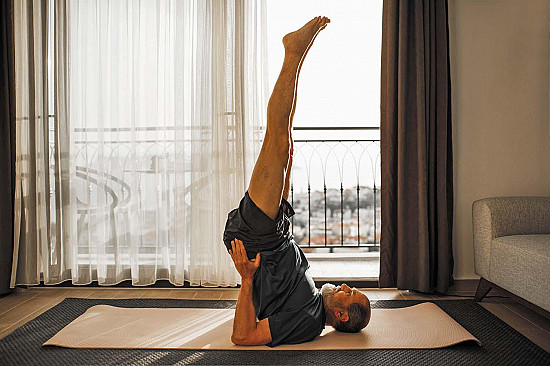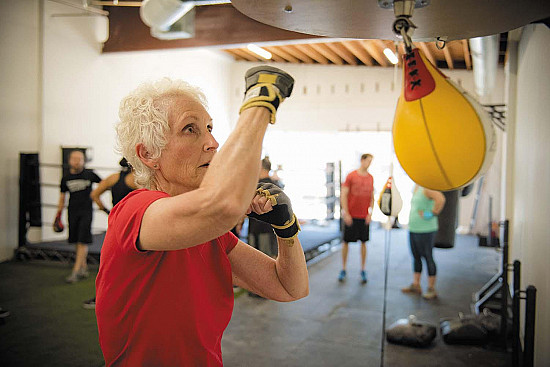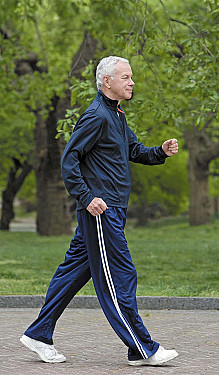Why you should care about your core
Strengthening the muscles in your midsection may help you stay active and pain-free.
Whether you refer to it as a spare tire, a muffin top, or love handles, having a roll of fat around your waist is pretty common. But even if you're not overweight, a bulging midriff may raise your risk of heart disease.
Despite the many ads that tout "one simple trick" to lose belly fat, there's no getting around it: whittling down your waistline takes a bit of effort. One important step is strengthening your core, which includes the muscles in your abdomen, back, sides, pelvis, and buttocks. However, a strong core is only part of the picture.
"You can't lose belly fat by exercising only your abdominal muscles," says Clare Safran-Norton, clinical supervisor of rehabilitation services at Harvard-affiliated Brigham and Women's Hospital. To lose fat anywhere on your body, you need a combination of aerobic exercise and strength training, plus a healthy, portion-controlled eating plan, she says.
Why focus on your core?
All forms of exercise help burn calories, aiding weight loss. But including core-strengthening exercises in your workout is important for several reasons. First, many sports and other athletic pursuits are powered by a strong core, including golfing, tennis and other racquet sports, biking, running, swimming, baseball, volleyball, kayaking, and rowing. Developing core muscle strength may make your exercise stints more effective — and maybe even more enjoyable.
Second, having a strong core helps improve balance, which lowers your risk of falling. It may also prevent other injuries, such as muscle strain or spasms in the lower back. Well-developed core muscles help stabilize your spine, helping to create a firm base of support for virtually all movement, including everyday moves like reaching up to a shelf or wiping up a spill on the floor. In addition, without a strong core, your leg muscles may not function in an optimal position, which often puts undue stress on the hips and knees. These common back and leg aches and pains often derail regular exercise routines, which are important for a healthy heart. Finally, core conditioning improves posture, which contributes to a trimmer appearance.
Core competence
The best exercises for your core target several groups of muscles at a time, such as the plank, which builds muscles in the abdomen, back, and side. Although traditional planks are done on the floor, you can do an easier version using a desk or table (see "Plank on table"). Safran-Norton also suggests doing simple abdominal contraction exercises and opposite arm and leg raises, pictured below.
As always, it's a good idea to check with your doctor beforehand to address any physical limitations or other health concerns before trying new exercises. For more information and many more core exercises, see the Harvard Health Publishing Special Health Report Gentle Core Exercises (/GC).
Plank on table

Starting position: Stand facing a table or counter (or any other solid surface that will not move) with your feet shoulder-width apart.
Movement: Align your shoulders directly over your elbows, forearms on the table as pictured. You can stand on your feet or toes as pictured. Balance your body in a line like a plank. Pull your belly up and in as if you were pulling on tight jeans, keeping your upper-body weight on your forearms. Hold for 15 seconds. Rest for one to two minutes. Repeat. Over time, try to build up to a two-minute hold.
Opposite arm and leg raise

Starting position: Kneel on all fours with your hands and knees directly aligned under your shoulders and hips. Keep your head and spine neutral.
Movement: Extend your left leg off the floor behind you while reaching out in front of you with your right arm. Keeping your hips and shoulders squared, try to bring the extended leg and arm parallel to the floor. Hold. Return to the starting position, then repeat with your right leg and left arm. This is one rep. Try to do eight to 10 reps, which counts as one set. When you're able, build up to two sets, with a 30- to 90-second rest in between.
Abdominal contraction

Starting position: Kneel on all fours with your hands and knees directly aligned under your shoulders and hips. Keep your head and spine neutral — that is, don't bend or arch your back or neck.
Movement: Exhale as you tighten your abdominal muscles by pulling them up toward your spine, keeping your spine neutral. Hold for five to 10 seconds. Release your abdominal muscles and return to the starting position. This is one rep. Try to do eight to 10 reps, which counts as one set. When you're able, build up to two sets, with a 30- to 90-second rest in between.
Exercise photos by Michael Carroll
Disclaimer:
As a service to our readers, Harvard Health Publishing provides access to our library of archived content. Please note the date of last review or update on all articles.
No content on this site, regardless of date, should ever be used as a substitute for direct medical advice from your doctor or other qualified clinician.















